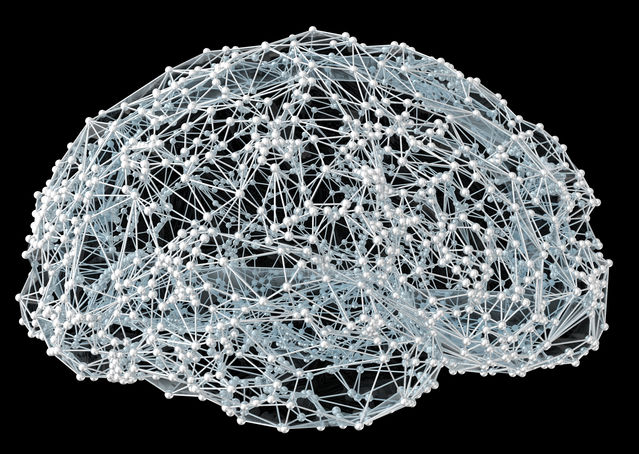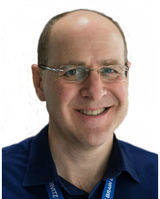Complexity theory and emergence point the way to understanding consciousness.
Posted Jan 28, 2019
By Ralph Lewis, M.D.
Original link: https://www.psychologytoday.com/intl/blog/finding-purpose/201901/how-could-mind-emerge-mindless-matter

Source: Cherezoff | Dreamstime
The matter of souls
Most people, even in 2019, still assume that the mind and the self possess some sort of spirit or soul that is not merely the product of physical particles. While neuroscientists may scoff at such quaint folk psychology, regarding it as based on antiquated religions dreamed up by pre-scientific people who were still trying to figure out where the rain came from, it is actually completely understandable that intelligent people would still believe such things. After all, the mind and subjective self-aware consciousness bear no qualitative resemblance whatsoever to the physical properties of matter. A reductionist scientific approach of explaining the functioning of the brain in purely material terms based on circuits, neurons and neurotransmitters, while incredibly interesting and illuminating, has not yet solved the mystery of why or how it feels like something to be a conscious self.
Still, here’s the thing: everything we know from science confirms that we and the world are composed purely of physical matter and energy. There is absolutely no way compatible with science for a spiritual realm to exist in anything other than our imagination. For spiritual phenomena such as souls and supernatural or paranormal forces to be real, most of science would have to be wrong. If we wish to reach a different conclusion, we must be prepared to reject a sizable proportion of the entire body of scientific knowledge and evidence, and start over (consider that this is the same knowledge and evidence-base that makes your cell phone work—it would not work if the science was wrong).
Scientific reductionism—nothing but the sum of its parts
Nevertheless, the traditional scientific method of reductionism— understanding complex things by identifying and analyzing their smallest elements or parts of the system, provides an incomplete explanation for the human mind and the brain that produces it. The traditional approach of scientific reductionism would suggest that the functioning of the brain or mind is nothing but the sum of its parts—circuits of nerve cells made of molecules made of atoms made of elementary particles, interacting with each other according to the simple laws of physics.
Is that all there is?
Scientific reductionism is a crucial and elegant approach to understanding the world including the brain, and it has yielded astonishing insights, but it can feel unsatisfying and disheartening to some people. If everything is ultimately reducible to particles and physics, then everything may ultimately appear meaningless and pointless. Is that all there is? If so, where does our humanity come from? We need to understand where we fit into such a universe, with our complex subjectivity.
Complexity and emergence—greater than the sum of its parts
In the last three decades or so, an influential new interdisciplinary science called complexity theory (the science of complex systems) has developed. It is focused on devising models to explain how properties of complex systems emerge from the interactions of simpler constituents. Complex systems acquire properties that differ both quantitatively and qualitatively from their simpler constituents—properties that are not inherent to their constituents and cannot be inferred or predicted from them. Such novel properties of the complex system are referred to as emergent phenomena. Emergence is the opposite of reductionism. The whole is greater than the sum of its parts. There is no ‘magic’ involved here, just complex physical interactions. Emergence is a spontaneous, bottom-up, self-organising phenomenon of complexity, with no external cause required, no top-down design and no centralized control of the system.
Complexity science doesn’t replace the standard approach of reductionism. It complements it. Reductionism is still an extremely useful and powerful method of understanding complex systems.
Emergence: novelty can enter the universe
Consider the properties of water as a very basic example. Water has several emergent properties, such as cohesive behavior, ability to moderate temperature, and expansion upon freezing. Even more simply, consider the ‘wetness’ of water. The individual hydrogen and oxygen atoms that comprise H2O do not possess any of these properties and behaviors; the properties cannot even be predicted or inferred from the properties of the individual atoms—they are emergent.
Water is a simple example. Much more magnificent novelty than that has emerged—all of nature, really. Think of it as the universe’s spontaneous, unguided creativity—all the more marvelous for its complete lack of conscious intention.
The brain is the most complex of complex adaptive systems
Clearly, the brain is a phenomenon in which the whole is greater than the sum of its parts, and its product, the mind or subjective sense of self, is radically different qualitatively from its parts—an emergent property.
Actually, this is not just the case for the brain, but for any complex adaptive system, of which there are myriad examples in our world. To name just a few: individual organisms, systems within an organism such as the immune system or brain, colonies of social insects, bird flocking, herd migration, traffic flows, cities, financial markets, the internet, ecosystems, and climates. Each is a system with a network of many agents / constituents interacting.
Complex adaptive systems, which produce emergent phenomena, are considered complex in that they are dynamic networks of interactions between their component parts. They are considered adaptive in that they change and self-organize in response to their changing environment.
Consciousness emerged in the universe as a radically novel phenomenon. So did life.
The human brain is the most complex adaptive system known to us. And consciousness as a phenomenon is the most radically different from physical matter of all phenomena known to us. But of course, don't forget that consciousness is not always highly rich and complex—it occurs in gradations in different species and in different states of brain health in humans; there are many kinds of minimal and simple states of consciousness.
Other than consciousness, the next most radically different phenomenon known to us that has emerged from ordinary matter is life itself. It used to be assumed that living things must surely possess some sort of mysterious animating essence, some kind of vital force (‘élan vital’) that non-living matter lacked. But the mystery of what makes a thing alive was solved in the twentieth century. What makes a thing alive is the organization of its atoms.
Spontaneous self-organization of complex adaptive systems and the rules that govern them
Living things are a special class of complex adaptive systems. A central characteristic of complex adaptive systems is organization. Remarkably, these systems form by self-organization or a process of spontaneous order. They create overall order from local interactions between parts of an initially disordered system. The process does not require design or control by any external agent, or any centralized control.

Termite mound.
Source: Miwainoz | Dreamstime
The ‘rules’ governing the interactions of constituents of a complex adaptive system are usually very elementary and operate at a local level between the individual constituents. Complex adaptive systems emerge in ways that are analogous to grassroots political organization that arises at a local level from interactions between neighbors. The simple local rules of interaction enable self-organization. No one is ‘in charge’—the process is bottom-up rather than top-down. But the complex whole system resulting from these interactions, with its new emergent properties, does have a constraining effect on the individual constituents, acting back down on them. Reciprocal or reverberating feedback loops between the constituents and the whole are established—for example, between individual termites and the colony as a whole, or between individual neurons and the brain as a whole.
So ‘clever’ that they seem designed
Complex adaptive systems in nature can be exceedingly intricate and can seem so ‘clever’ that one can be forgiven for thinking that they must surely have been intelligently designed according to some blueprint or master plan, carefully guided through their assembly process. But complexity science provides explanations for how all this occurs through natural, spontaneous, self-organizing processes—entirely unguided. (Feel free to invoke a Higher Power as Intelligent Designer, but doing so is entirely redundant, and given the imperfections, failures and inefficiencies of the processes, the Designer unfortunately could not be all-powerful, all-knowing or all-good).
Even human-made complex adaptive systems with constraints imposed on them by design cannot be completely controlled or predicted by their human designers (predict the financial markets, anyone?).
In the case of living organisms, the well-understood processes of evolution by natural selection and sexual selection play a huge and powerful additional role in further sculpting the marvelous and intricate complexity we see in nature, greatly reinforcing the appearance of intelligent design. But the self-organizing processes of complex adaptive systems occur independently of evolution and apply to both living and non-living systems. They also almost certainly played a central role in the initial origin of life, before evolutionary forces took hold in driving increasing complexity.
We’ve only just begun the scientific study of how consciousness emerges
Complexity theory provides important clues to scientists regarding the form that an eventual theory of consciousness might take. Complexity theory is now integral to neuroscience’s quest to understand how information processing and circular control operate in the brain’s neural networks. Those networks operate as cybernetic loops, with no single region in complete control.
To be sure, we are still very far from a scientific explanation of consciousness. Serious scientific attempts to explain consciousness only really began in the 1990s—before that, consciousness was considered too intractable and was regarded as more of a philosophical question than a scientific one. Indeed, neuroscience itself is only a few decades old as a discipline.
When I started training in psychiatry in the early 1990s, we studied mind and brain as more or less parallel subjects, often unsure how to fully integrate them. Since then, the science of the mind-brain relationship has made enormous advances, aided by new technologies like sophisticated neuroimaging: neuroscientists are steadily unlocking the mystery of how perceptions, thought processes, and the subjective sense of self all emerge from the immensely complex interactions of billions of neurons, each with thousands of connections, forming complex networks and feedback loops, shaped by hundreds of millions of years of unguided natural selection pressures.
We have really only just begun the process of explaining consciousness scientifically, and despite astounding advances and fantastic new insights (far beyond the scope of this blog), there are still large explanatory gaps to fill. But wagering that a particular gap will not eventually be closed by science would be an unwise bet.1
References
1. Parts of this article were adapted from: Ralph Lewis, Finding Purpose in a Godless World: Why We Care Even If The Universe Doesn’t (Amherst, NY: Prometheus Books, 2018)
About the Author
In Print:




